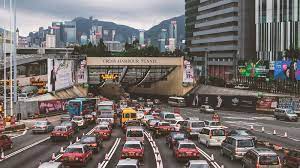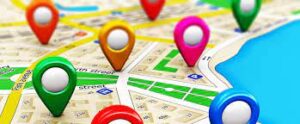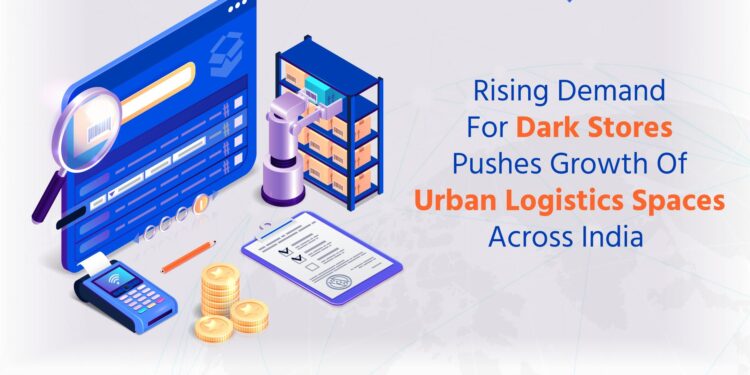Navigating the Urban Jungle: Overcoming the Challenges of City-Based Delivery and Distribution in the Age of Urban Logistics
Introduction:
The growth of e-commerce and the increasing demand for faster delivery times have transformed the logistics landscape. As more people migrate to urban areas, the need for efficient and timely delivery solutions has become more pressing. Urban logistics, the movement of goods within cities, has seen significant growth in recent years. However, this growth has also brought about a number of challenges for city-based delivery and distribution.
In this article, we will explore the challenges faced by logistics companies as they navigate the urban jungle to deliver goods in a timely and cost-effective manner. We will also examine some of the innovative solutions that have emerged to tackle these challenges.
Traffic Congestion and Delivery Delays
One of the biggest challenges faced by logistics companies in cities is traffic congestion. With more people living in urban areas, there are more cars on the road, leading to increased traffic and longer delivery times. Traffic congestion can also lead to delivery delays, which can impact customer satisfaction and ultimately harm the reputation of logistics companies.
To tackle this challenge, logistics companies have started to explore alternative delivery methods such as bicycles, electric vehicles, and drones. These solutions not only reduce traffic congestion but also offer faster delivery times and lower delivery costs.

Limited Space for Delivery Vehicles and Warehouses
Another challenge facing logistics companies in cities is limited space for delivery vehicles and warehouses. With limited space, logistics companies must find innovative solutions to store and manage inventory efficiently.
One solution is to use micro-warehouses, which are small, strategically located warehouses that allow for quicker delivery times and reduced transportation costs. Another solution is to use shared spaces for warehousing and last-mile delivery. By sharing warehouse space and delivery vehicles, logistics companies can reduce their overall costs and increase efficiency.
Environmental Concerns and Sustainability
The growth of urban logistics has also raised concerns about the impact of delivery vehicles on the environment. The use of diesel-powered delivery trucks and vans contributes to air pollution, which can have a negative impact on the health of city residents.
To address these concerns, logistics companies have started to explore sustainable delivery solutions such as electric and hybrid vehicles. Some companies have also implemented last-mile delivery solutions using bicycles and electric scooters, which not only reduce emissions but also offer a faster and more flexible delivery option.
The Role of Technology in Urban Logistics
Technology has played a significant role in the growth of urban logistics, enabling logistics companies to track and manage deliveries more efficiently. Real-time tracking, route optimization, and predictive analytics have all become essential tools for logistics companies operating in cities.
Innovative technologies such as autonomous delivery vehicles and drones are also being developed and tested to further enhance the efficiency and speed of last-mile delivery.
The growth of urban logistics presents significant challenges for logistics companies, including traffic congestion, limited space for delivery vehicles and warehouses, environmental concerns, and the need for innovative delivery solutions. However, with the use of innovative technologies and a focus on sustainability, logistics companies can navigate the urban jungle and continue to meet the evolving needs of their customers.
Regulatory Hurdles
Another challenge for urban logistics is navigating regulatory hurdles, including local zoning laws, parking regulations, and noise restrictions. These regulations can limit the use of certain delivery methods, such as drones or electric vehicles, and impact the efficiency of logistics operations.
To address these regulatory hurdles, logistics companies must work closely with local governments and stakeholders to develop solutions that balance the needs of logistics operations with the concerns of city residents.

Last-Mile Delivery and Customer Expectations
The last mile of delivery, from the warehouse to the customer’s doorstep, is often the most challenging and expensive part of the delivery process. Customers expect faster and more flexible delivery options, which can be difficult to achieve in cities due to traffic congestion and limited space for delivery vehicles.
To meet these customer expectations, logistics companies must invest in innovative last-mile delivery solutions, such as locker systems, pickup points, and same-day delivery services. These solutions not only offer faster and more flexible delivery options but also reduce the impact of delivery vehicles on the environment.
The Importance of Collaboration and Partnership
To overcome the challenges of urban logistics, collaboration and partnership are essential. Logistics companies must work closely with local governments, retailers, and other stakeholders to develop solutions that meet the needs of all parties involved.
For example, some retailers have partnered with logistics companies to use their stores as pickup points for online orders, reducing the need for last-mile delivery and offering a more convenient option for customers.
Urban logistics is a rapidly growing sector that presents significant challenges for logistics companies. Traffic congestion, limited space for delivery vehicles and warehouses, environmental concerns, regulatory hurdles, last-mile delivery, and customer expectations are all challenges that must be navigated.
However, with the use of innovative technologies, sustainable delivery solutions, and a focus on collaboration and partnership, logistics companies can overcome these challenges and continue to meet the evolving needs of their customers in the urban jungle. By working together with local governments, retailers, and other stakeholders, the logistics industry can help to create a more sustainable and efficient delivery ecosystem for cities.
Looking ahead, the growth of urban logistics is expected to continue as more people move to cities and e-commerce continues to expand. However, it is important to address the challenges facing urban logistics to ensure that the growth of the sector does not come at the expense of city residents and the environment.
One solution is to promote a shift towards sustainable and efficient last-mile delivery solutions, such as electric vehicles, bicycles, and shared warehousing. These solutions can help to reduce emissions, traffic congestion, and noise pollution while also offering faster and more flexible delivery options for customers.
Another solution is to leverage innovative technologies, such as predictive analytics and autonomous delivery vehicles, to enhance the efficiency and speed of last-mile delivery. These technologies can help to optimize delivery routes, reduce delivery times, and improve the overall customer experience.

Finally, it is important to foster collaboration and partnership between logistics companies, local governments, and retailers to develop solutions that meet the needs of all stakeholders. By working together, we can create a more sustainable, efficient, and customer-focused delivery ecosystem in cities.
Conclusion
The growth of urban logistics presents significant challenges for logistics companies, including traffic congestion, limited space for delivery vehicles and warehouses, environmental concerns, regulatory hurdles, last-mile delivery, and customer expectations. However, by leveraging innovative technologies, promoting sustainable and efficient delivery solutions, and fostering collaboration and partnership, the logistics industry can navigate the urban jungle and continue to meet the evolving needs of customers while creating a more sustainable and efficient delivery ecosystem for cities.



